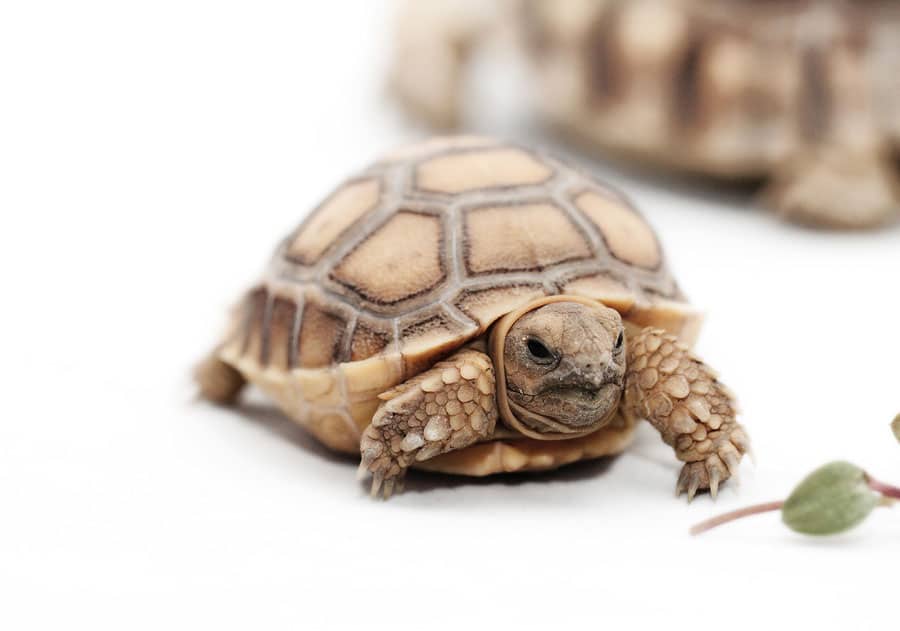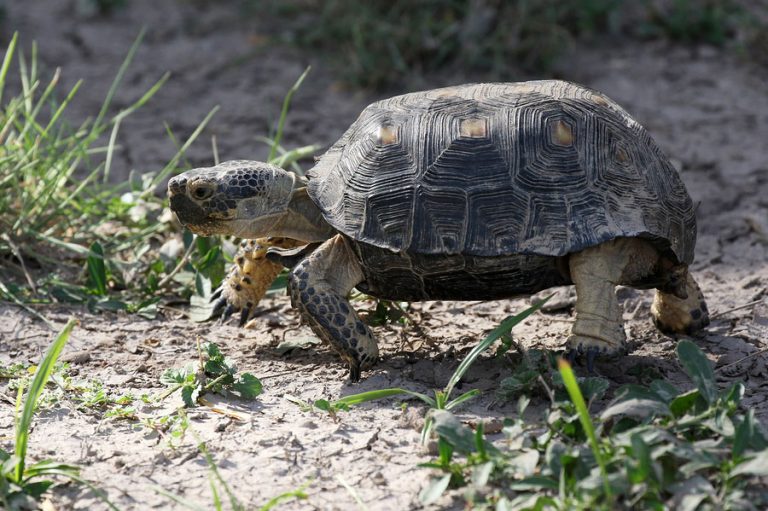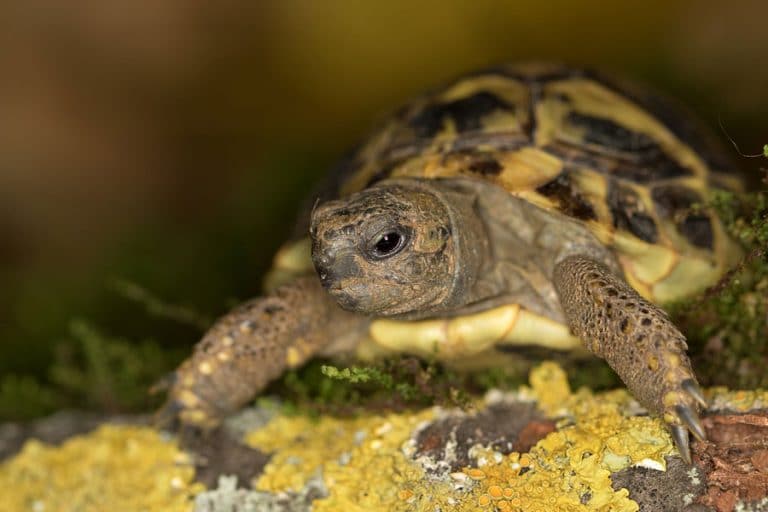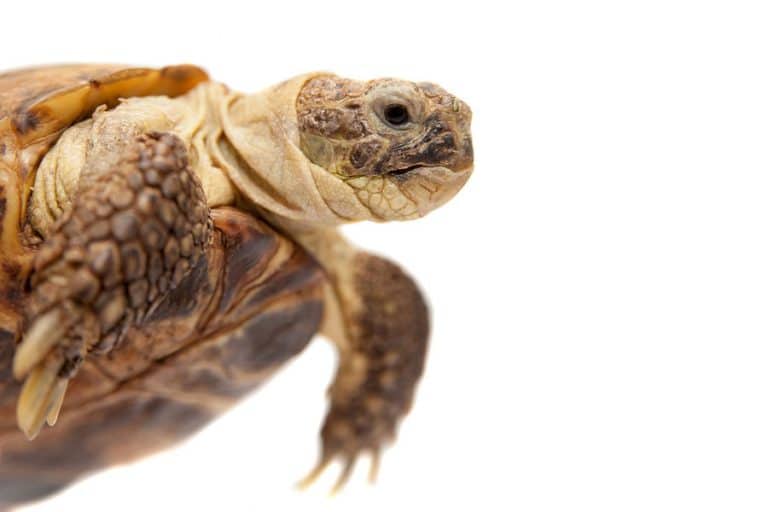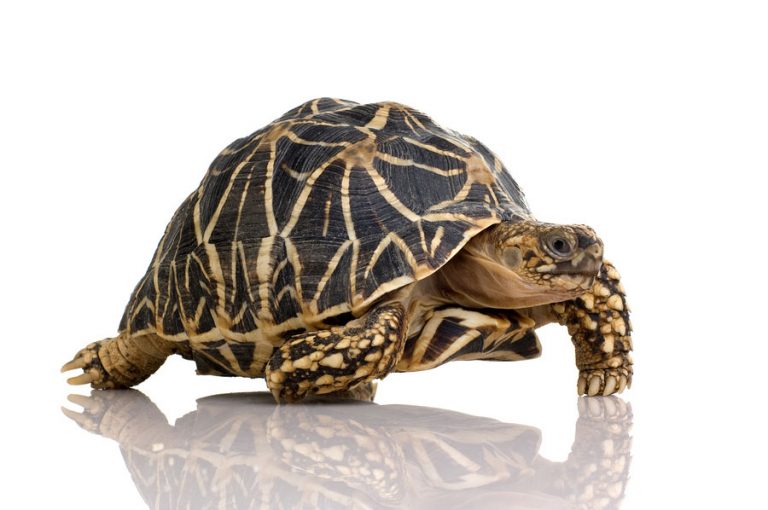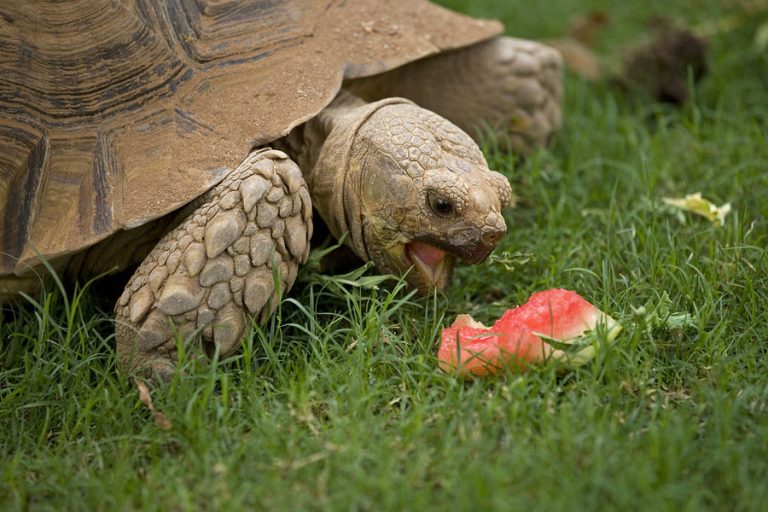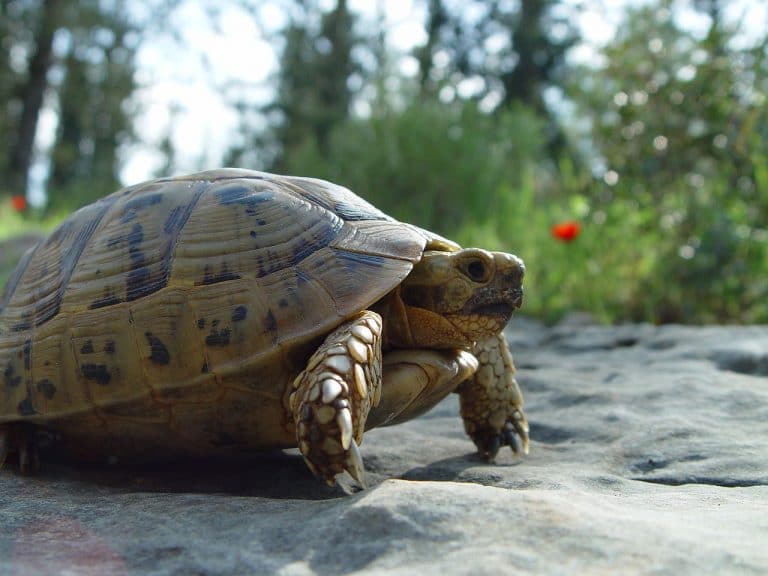Baby Sulcata Tortoise: Everything You Need To Know
Baby Sulcata Tortoise, also known as the African Spurred Tortoise, is among the most well-recognized tortoise reptiles globally. The Sulcata tortoise is generally known for its gigantic size and shape. Before you decide to adopt the baby sulcata tortoise, it would be best if you consulted with a local pet expert.
You may be interested in how you should take care of the baby sulcata tortoise and whether the care of the baby sulcata tortoise itself differs from that of an adult one.
The way we should take care of the baby sulcata tortoise is the same as for the adult ones. You should know that you need to provide additional care to save your baby sulcata tortoise from the predators and external dangers it might face.
In this article, we are going to concentrate on everything you need to know about baby sulcata tortoise care. But before we start discussing the baby sulcata tortoise’s care, let’s look for more general information on this species.
Ideal Living Condition
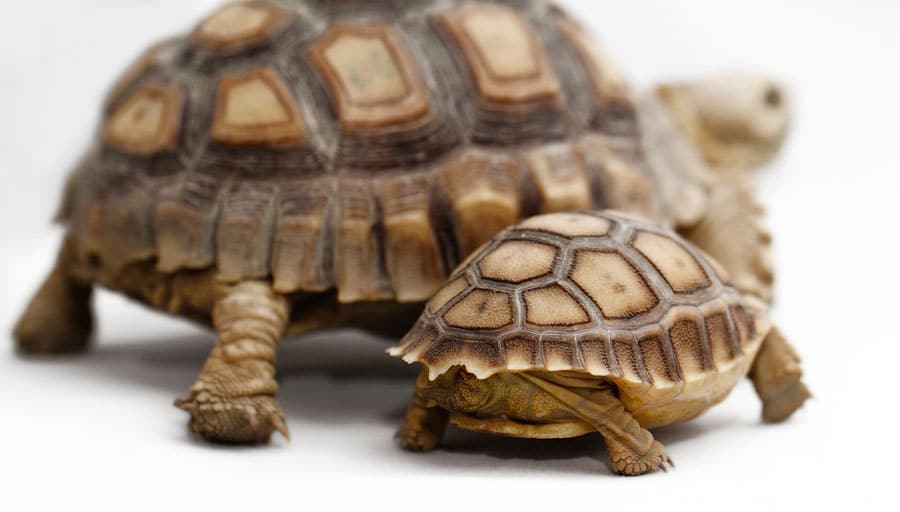
The animal needs ideal living conditions from the start of its life to lead a healthy one.
A cage that fits everything the baby tortoise needs is ideal for their living. ZooMed Wood Tortoise House can be considered the house of the baby Sulcata. Also, ensure to arrange to bed, a bowl of water, and a source of light inside the cage. With all these, a heater should be placed under the cage as this animal stays in dry and warm weather. There should be a cool spot as well inside the cage area so that the baby can move there if they feel too hot.
Finally, there should be an area to place their foods, but it should be away from the heat. Otherwise, the foods will go bad with growing bacteria on them. Babies should never be left unattended outside, as even an ant can attack and kill them.
Diet
Another important consideration for a healthy tortoise is their diet. Organic wheatgrass, dark leafy greens, and fruits are the ideal diet for baby Sulcata Tortoise, but most of the hatching does not prefer to eat hay.
When it comes to food dishes, it is better to use the top of a butter container for that purpose, as this animal crawls on their food and the top of a butter container will keep the food off the bare ground. Also, the dish should be washed properly after feeding, otherwise, it will grow bacteria.
What is the Average Size of a Sulcata Tortoise?
The baby sulcata tortoise starts very small; their size is compared with a shot glass. But with time, they start growing and can actually grow as much as 200 lbs.
From the very first time of birth, the baby sulcata tortoise is about 2 inches in size. The size of a baby sulcata tortoise is greatly based on the environment, where they live, and the food they eat. A healthy sulcata tortoise is going to reach about 7 inches and gain 5–10 pounds per year.
After 15-20 years of their lifespan, they become larger in size. Sulcata tortoises are the third largest type of tortoise worldwide. Female sulcata tortoises will normally weigh 70-90 pounds, and males may become a bit bigger than females.
The Lifespan of Sulcata Tortoises
The average lifespan of a sulcata tortoise is around 80–100 years. This type of reptile is a very hardy creature that develops in a severe and cruel environment in the desert. The majority of health problems are related mostly to weight loss.
In order to keep your baby sulcata tortoise healthy, you should systematically control its weight, and if it starts to decrease, it would be best to talk to a vet.
How Does a Baby Sulcata Tortoise Typically Behave?
Sulcata tortoises mostly spend their spare time on two central activities: burrowing and grazing. When the temperature decreases, sulcata tortoises usually graze for several hours, as their gigantic size needs energy and calories.
Sulcata tortoises typically spend their mornings lying under the rays of the sun in order to raise the temperature of their bodies after a chilly, cold night.
When being in the same wildlife, sulcata tortoises are pretty aggressive to one another. Furthermore, sulcata tortoises apply the major types of communication and interaction, such as physical movements, vocalization, and pheromones.
In addition to this, we should mention that they use their feet and mouth in hopes of investigating various traits and details of their environment.
In contrast to other turtles, the sulcata tortoise does not generally hibernate the whole winter. However, they might sometimes get into the periods of the so-called brumation.
What happens during brumation? Let us answer your question: brumation is the process of semi-hibernation where sulcata tortoises are in a sleepy condition during the winter.
An Interesting Fact
Believe it or not, the sulcata, just like their close cousins, can live for centuries. But without proper care and the right food, they may die earlier than usual. That’s why you should know how to take care of a baby sulcata tortoise if you’re considering becoming a parent to one of them.
How to Take Care of a Baby Sulcata Tortoise?
Did you know that you need to provide special care and attention to baby Sulcata? One of the keys to raising one successfully is to know every aspect of this species, from their diet to their temperament. So, here are some important facts about them to help you raise them more efficiently.
Baby sulcata tortoise care is identical to adult sulcata tortoise care. A baby sulcata tortoise is generally 2 inches in size. They may need the same care as adult sulcata tortoises, but you should provide some extra care, as they are still fragile and are not able to protect themselves.
We recommend you take care of baby sulcata tortoises indoors for the first time so you decrease the chance of missing or causing harm to them. It is best to keep baby sulcata tortoises in sweater boxes or glass aquariums. The only accessories you are going to need are the lighting, substrate, and temperature gradient.
You should keep your baby sulcata tortoise hydrated, so its shell does not pyramid. Baby sulcata tortoises may retain shell pyramiding if you do not provide enough humidity. Don’t forget to soak baby sulcata tortoises in water every morning. Pay attention to the temperature of the water you are soaking it in. It should not be too hot or too cold.
- Keep risky items out of their territory
Sulcata tortoises are known as active and unfamiliar creatures. As baby tortoises are still weak and vulnerable, you need to be sure there are no risky items that can hurt them. You need to make sure no harmful objects or animals like cats, parrots, dogs, or even needles are around your baby sulcata tortoise.
Generally, the sulcata tortoise is a very greedy and uncontrolled consumer, so you should keep away any kind of animal hair, toxic or poisonous plants, and plastics. You should avoid using grass, as it may make the baby sulcata tortoise feel tired and frustrated, so the tortoise may even pass away from the excess heat.
- Plan an essential diet for a baby sulcata tortoise
Sulcata tortoises are well-known for being herbivorous creatures, so the best diet for an adult sulcata tortoise would be grass. They scrape mulberry leaves, grape leaves, lawn leaves, and hay as well. You may provide baby sulcata tortoises with an identical diet. However, they generally find it difficult to eat tough grass, as their jaws are not strong enough.
You may feed the baby tortoise with a combination of dark green leaves, for example, hay and grass. What you should also do is to feed them with a pelleted grass diet, as well. Furthermore, you need to supply them with some fruit as a random treat.
You, as the owner of the baby sulcata tortoise, should dust it with calcium and multivitamin additional supplements 2-3 times a week. It would be great if you fed the tortoise with a small portion of salad in order to provide the proper growth and digestion.
- Reach out to veterinary professionals to help keep the baby sulcata tortoise in good shape
Even if you understand the basic principles of taking care of your baby sulcata tortoise, sometimes it’s still best to consult the professionals. The reason is that veterinary professionals help keep the baby sulcata tortoise in good shape.
Nevertheless, baby sulcata tortoises are incorrigible and tough creatures, but they are still fragile and incapable of doing anything. Moreover, the majority of baby tortoises may be healthy and strong enough from the very first moment of their birth but will face hidden diseases. As a result of this, you should consult with an expert veterinarian.
Some of the more common health issues that may happen to baby tortoises are shell rot, bacterial infections, bone disease, and pyramiding.
Recommendations and Tips
If you’re planning to have a baby sulcata tortoise, you should realize that they do not like being handled. If you feel the need to handle the tortoise, be sure you do not restrain it. Pay attention to the way you move it; be controlled, and do not grab it too far from the ground.
Remember to keep your hands clean before and after handling the tortoise in order to prevent transfer.
Typical Health & Behavioral Issues
Just like many tortoises, the sulcata is inclined to respiratory infections, mostly if they are held in environments that are very damp. In addition to this, shell rot is an ordinary health issue for sulcata tortoises. This is generally affected by a fungal infection that causes a dry shell. When the tortoise’s phosphorus-to-calcium ratio is not stabilized, it may cause the weakening of its bones.
The metabolic bone ailment is another serious health issue among sulcata tortoises. Such a disease may cause disproportion and, finally, death if not cured in time. All these issues may be treated by a professional veterinarian who specializes in tortoises. Do not try to cure your baby sulcata tortoise by yourself!
Where can you find the vast population of Sulcata Tortoise:
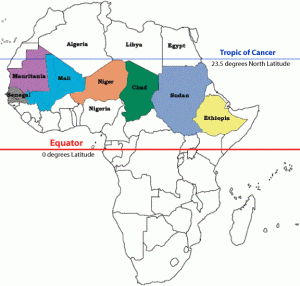
Final Thoughts
Before you adopt the baby sulcata tortoise, do detailed research. You should know that they need a lot of space to graze and lie under the warm rays of the sun. You should construct a large open-air cage filled with hidden barriers for your tortoise.
Their extended lifespans, fascinating personalities, and ability to be accommodated outdoors motivate owners to purchase them. They are able to build deep relationships with their owners and are one of the most absorbing species.
Did you find this article interesting and motivating enough to have a baby sulcata tortoise? Share your thoughts with us in the comments below.

Having discovered a fondness for insects while pursuing her degree in Biology, Randi Jones was quite bugged to know that people usually dismissed these little creatures as “creepy-crawlies”.

